Practice Song:
In order to create a song, I like to start with the drums. I did this by creating a drum rack initially. This was created by using varied samples of drums from kick and snare to hi-hat and crash cymbals. After doing this, I still felt unhappy with the sound the drum kit was producing so I loaded a premade drum pack. This included a guitar sound I liked for embellishments in the beat and upon playing around with loops, I created the pattern below by drawing it in:

Next, I felt that I needed to fill the space with some bass. As the guitar chords played in the drum loop are in the key of C, I decided to stick with this. I often like the sound of arpeggios and started with this idea. Due to most basslines using root notes I started the arpeggio on C but decided to remain on G for the third and fourth notes (see the image below). This sounded simple but effective. So I drew it into the midi, adapting it until I was happy with the sound and timing.

Finally, I wanted to add some piano. I loaded up the piano sound that was most authentic and began to randomly draw shapes on the Push controller. As the push automatically plays in the same key as your song, most notes fit nicely. As soon as I found a sequence that I enjoyed, I recorded it in and created an intro/verse section.

Track One:
Now that I was reacquainted with the way in which the software works, I was ready to adapt my ideas into something I like the sound of. I decided that the sound of the guitar chords was interesting but they were taking away from the integrity of the song so I removed them.
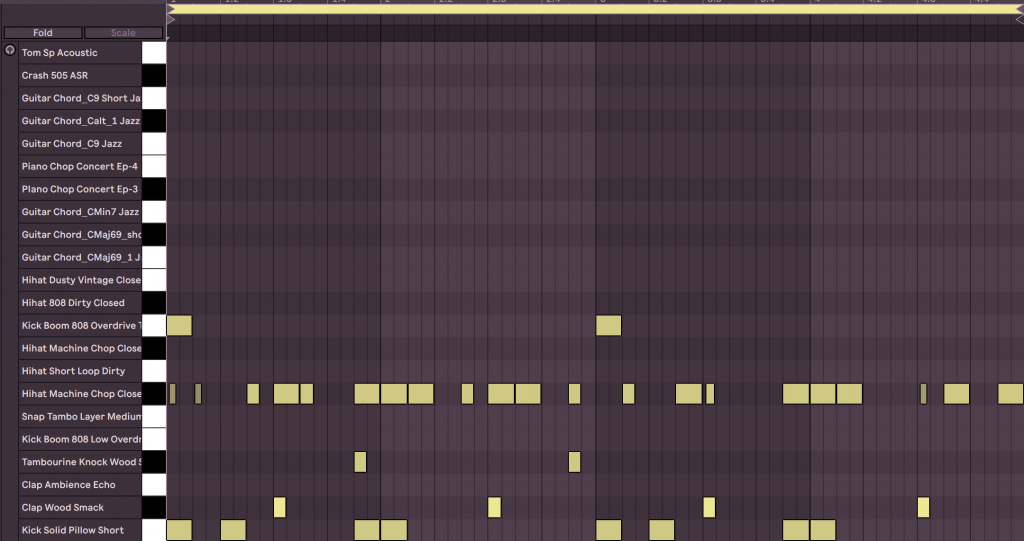
Then, in order to create some structure for the drums, I knew I had to add some fills to introduce the different sections of the song. First a transition between the intro and verse than from verse to chorus. In order to do this, I started on the Push, deciding which sounds went best together. Then I drew them in and then moved them around until they fit nicely. I repeated this process to create a fill for the verse and chorus section as well.
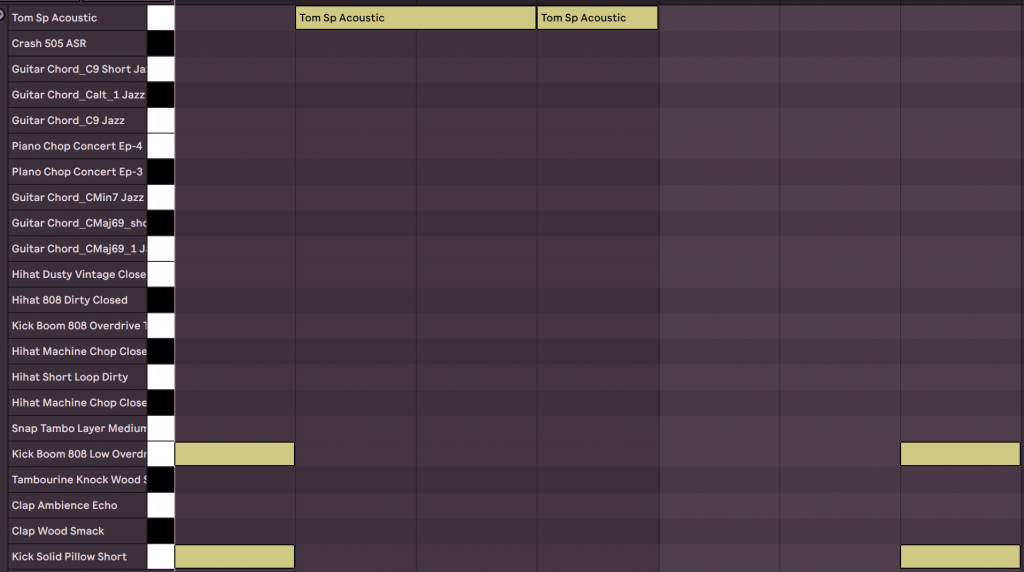
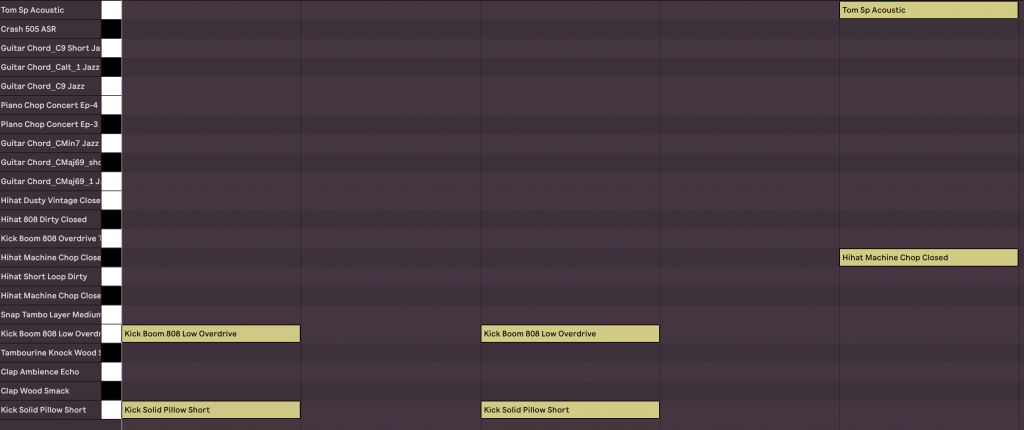
I then made my bass line more interesting and better fitting to the song, before adapting this again for a chorus section. To do this, I duplicated the original bass line idea and changed the way the third and fourth notes were in length and pitch.

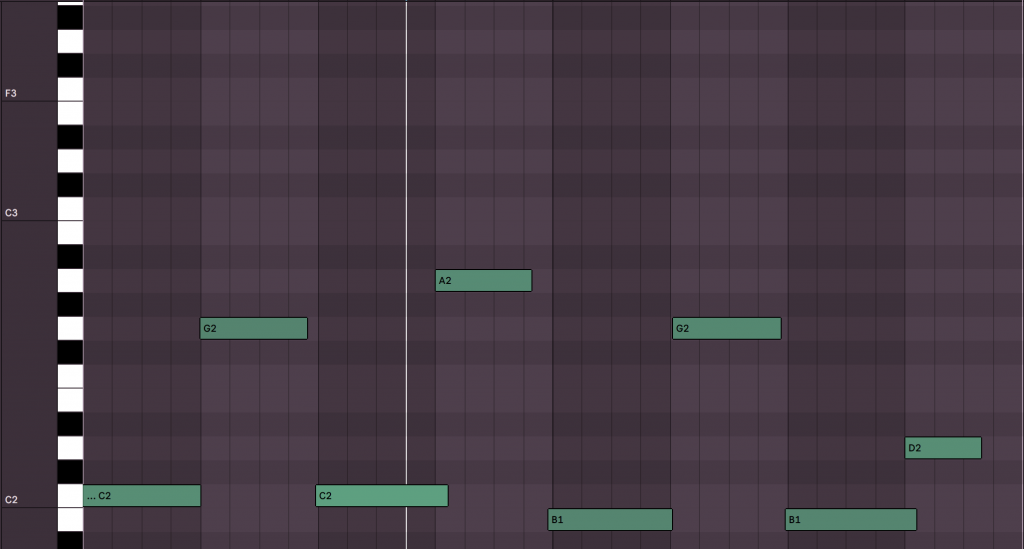
The bass line was built off of the chords I had additionally made for the piano, playing them in as I listened to the other elements of the song to create a standard chord structure and a transitioning chord sequence for the chorus.
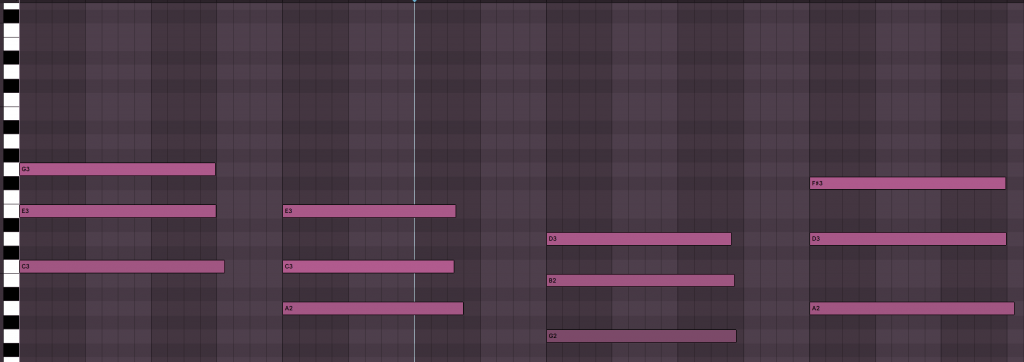
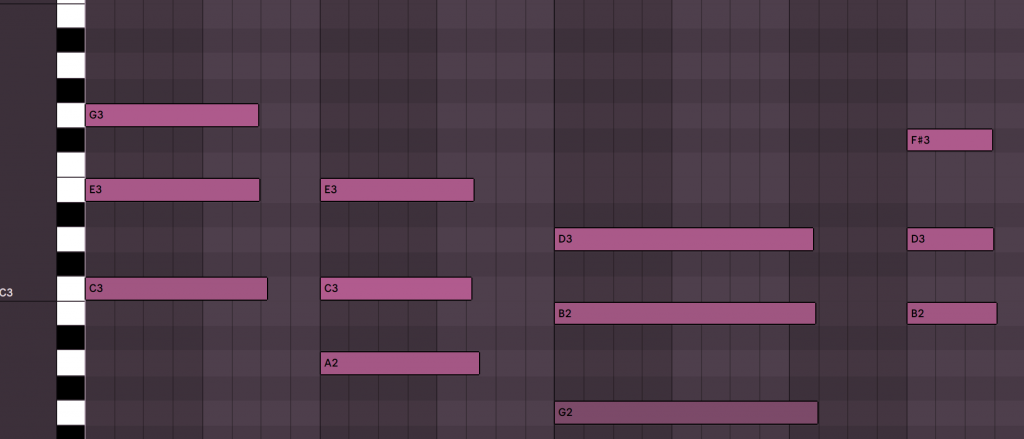
This is what the arrange view looks like of the full final structure I built so far.
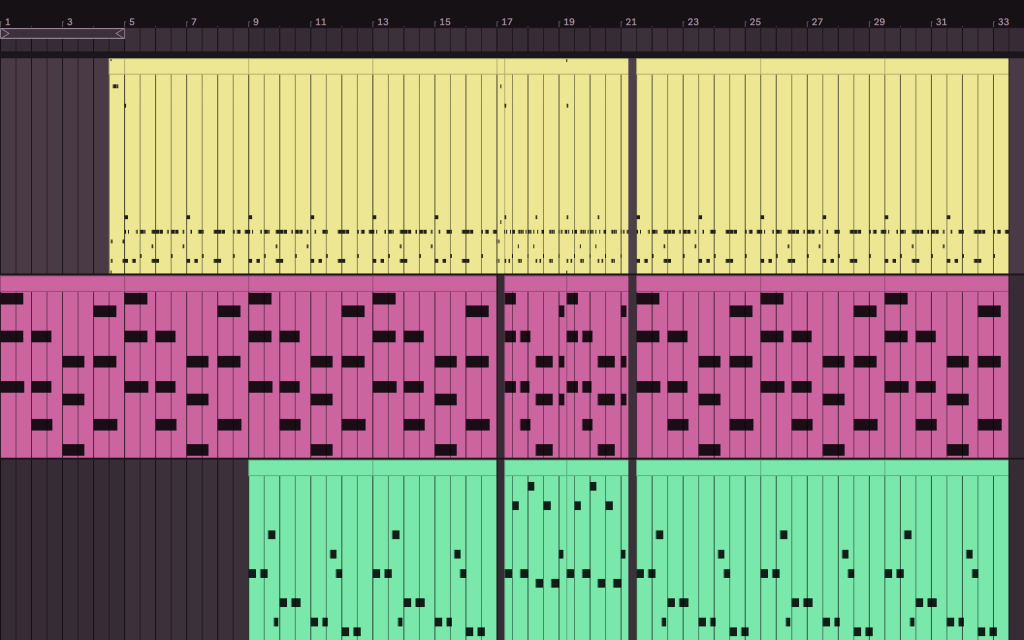
Now that I had completed my song structure, I wrote lyrics for the song to use as an audio element – vocal recording. However, due to unforeseen circumstances coming up to the deadline, I lost my voice and so I decided to create a guitar track instead. This is an instrument that I felt was missing from the song anyway. I used a clean tone amp and turned down the bass because I played a small riff on the bass strings at the end of the song, which sounded ‘buzzy’.

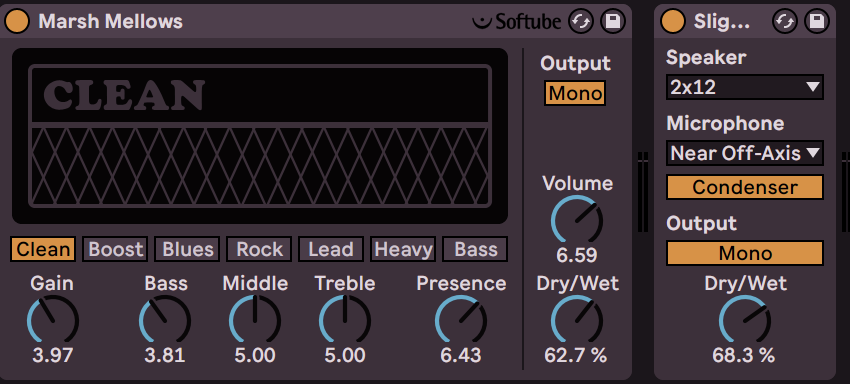
To add some depth, although there were already piano elements, I incorporated an organ into the mix. This is my favourite part of the song because of my use of the auto pan. This audio effect makes the organ sound delayed which creates a slightly syncopated feel in the song that wasn’t there before.


I also decided to add a bridge section despite the fact I would no longer be recording lyrics for some variation. This was comprised of just drums and piano. I played arpeggios on the MIDI keyboard and then used Ableton’s software to adapt them by speeding them up and slowing them down at different points. This then turns into the end, which is just a half verse.
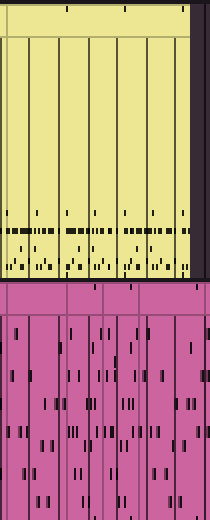
The final song structure looks like this:

Listen to the song here on SoundCloud
Track Two:
For my second song, I wanted to create an indie rock-sounding song. I once again started with the drums. To find a kit with the sound I liked, I downloaded the drums sound pack and came across an authentic-sounding one.
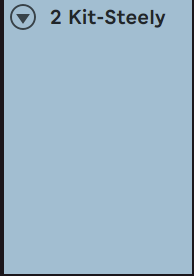
I then drew in the hi-hats because I wanted an upbeat-sounding song in terms of instrumentation. The hi-hats add a good groove and started a good foundation. Then I drew the kick in, as I feel this is the most important for establishing the rhythm and metre of a song, and then added a snare to complement these sounds.

Once that was done, I decided to design a guitar part. I felt like this needed to be fairly simple as I planned to add complexity into the bass line as that is something I take inspiration from with bands such as Red Hot Chilli Peppers and Arctic Monkeys. I played the root notes that give the impression of being picked. This gave me a basis for the chords I would like to use in the harmonic areas of the song.

When taking screenshots, I accidentally drew in the midi and created an interesting descending riff in this guitar part that I would like to use as variation in sections.

As mentioned above, I wanted a slightly complex bass line. So, I drew many shapes until I came up with a well-fitting melody.

Now that I had a verse, I wanted to start on my chorus. I decided to make this simple with chords and root notes only.
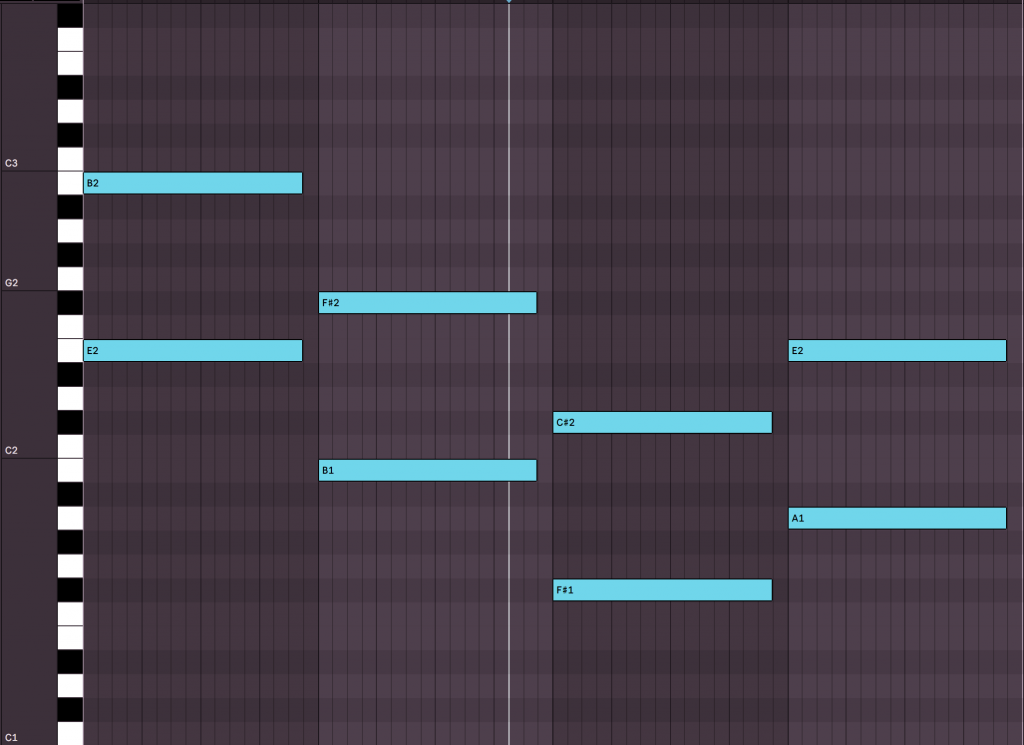
The guitar plays power chords, whilst the bass is playing root notes. I drew these in.

I wanted the drums in this section to be loud and played with a straight feel. I incorporated a crash cymbal to make this work.

Then to add variation I incorporated some hi-hats and a more syncopated rhythm.

This is what the final arrange view looks like.

Listen to the song here on SoundCloud
Are My Tracks Industry Standard?
Although this question is very much down to the opinion of each listener, industry professional, and others alike, I personally do not believe that these tracks are on par with other electronic music in the industry. If you compare these songs to famous tracks by DeadMau5 or Louis the Child, for example, there would be absolutely no contest. However, some may not enjoy their music and love mine. The idea of ‘industry standard’ is completely subjected to every individual. If I were to improve these songs to bring them up to my idea of industry-standard, I would write lyrics and record vocals for them. I would also mix and master the tracks before releasing them on more professional platforms than SoundCloud. This way they seem more reputable as well and have a higher standard.
